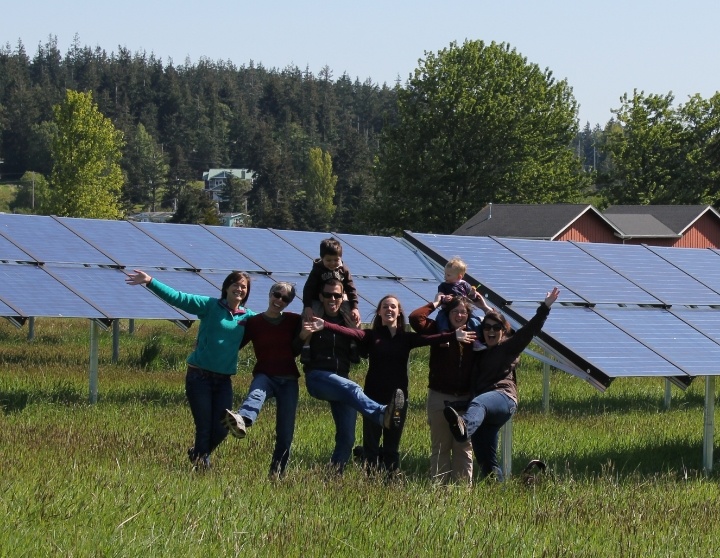
Solar for All
As installation prices drop and technologies improve, Americans are embracing solar. But there are still factors that limit the access to solarfor some people: tree cover, roofs that face the wrong direction, lack of upfront capital, or not owning the home.
Community-Shared Solar
Community-shared solar is a solar installation that is shared in a common space. Through a system called virtual net metering, homes and businesses, even if shaded by trees or with roofs facing the wrong diretion, collectively receive a bill credit as if the panels were on their own roof.
Community-shared solar has a number of benefits:
1. Better solar placement: Community-shared solar allows for the solar array to be set up with optimal exposure. Installers and consumers can choose the most productive sites making for a better investment with higher financial returns.
2. Broadens solar access: It allows non-homeowners to invest in solar. In affordable housing units or for people renting, community-shared solar gives them equal access to the benefits and cost savings of solar.
3. Installation prices drop on larger systems: Community-shared solar enables larger project developments - which lowers costs for everyone - and makes investment a more intriguing option. The Lawrence Berkeley National Laboratory (LBNL) calculated that the installed cost of solar drops over 30 percent when moving from a 2 kilowatt system to a 10 kilowatt system
4. Less red tape: Community- shared solar can streamline the interconnection application and review process for both utilities and customers. Compared to applications from multiple residents with rooftop solar, a community project would require a single filing, saving both time and money.
5. More renewables to the grid: More solar installations mean more renewables for everyone - good for the environment and good for peak demand times.
Check out CO's Solar Gardens Program for an impressive, working, community-shared solar program.
Interested in solar for your home? Click here for a free quote.
